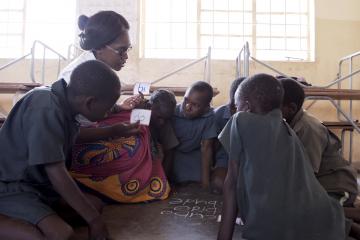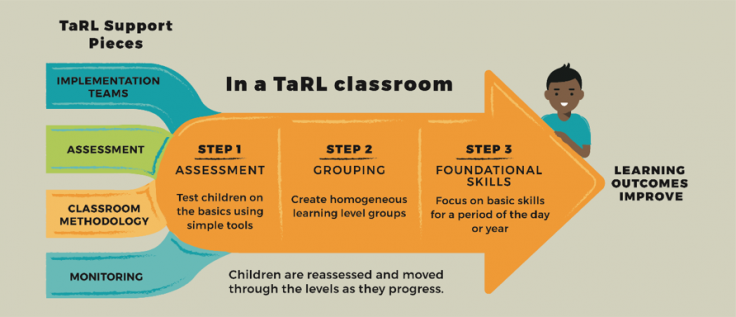
A new website for Teaching at the Right Level

J-PAL Africa and Pratham, one of the largest NGOs in India, have launched a new Teaching at the Right Level (TaRL) website in response to growing demand from governments, schools, and NGOs for details on TaRL methodology and implementation.
In recent years, education stakeholders have become increasingly aware of low foundational skill levels in primary schools and the lack of safety nets for the children who have not mastered basic reading and mathematics in the first two years of schooling. We designed the website to provide practical information on TaRL, an approach that effectively address this problem.
Teaching at the Right Level
TaRL has gained recognition as an evidence-based approach to address the learning crisis. Six randomized evaluations conducted by J-PAL affiliated professors have shown TaRL to be effective across a variety of contexts and implementation models. While the concepts behind TaRL are relatively simple (assessment, grouping children by learning level, and focusing on foundational skill activities appropriate for each group), evidence shows that the success of TaRL requires a comprehensive approach including several interacting support pieces.

The Website
The TaRL website provides policymakers, implementers, donors and other partners with a starting point for understanding how this approach has worked in other contexts as well as a plethora of implementation details.
Website visitors can start with the TaRL Approach. First, the Implementation Teams section outlines the different kinds of teams required and how to build their capacity through active training and mentoring. The second section, Assessment—the backbone of TaRL—explains the kinds of assessment tools that are used and why, and highlights how foundational skills assessments can refocus education systems. Third, Classroom Methodology describes Pratham’s approach to reading and mathematics instruction, including examples of classroom activities. Finally, Measurement and Monitoring explains what TaRL implementers measure and how they use the information collected.
The TaRL Approach resource is supported by an Evidence section, which includes a summary of research conducted by J-PAL affiliated professors on TaRL interventions, and TaRL in Action, which features case studies that provide useful examples of how the TaRL approach has been applied in different contexts.
Community of Practice
Ideally, the resources on this website will be complemented with leadership from local teams who can help tweak and test the approach in local contexts as well as technical assistance from the Pratham/J-PAL Africa team.
However, we know we can’t be everywhere at once—so we’re spearheading creation of a TaRL Africa Community of Practice to bring together TaRL-inspired implementers and supporters throughout the African continent. The Community section on the website highlights resources available for those interested in learning more and houses a forum aimed at facilitating discussion on key implementation questions. In addition, we plan to host guest writers on the TaRL blog, highlighting TaRL-inspired interventions and lessons coming from the field.
Are you or your organization interested in learning more about TaRL? Are you working on a TaRL-inspired intervention? Would you like to connect with others or share your reflections? Would you like to connect with the J-PAL Africa and Pratham teams? Please visit our website! While you’re there, start a discussion in a TaRL forum or submit a blog post on your latest TaRL innovation to info [at] teachingattherightlevel [dot] org.

